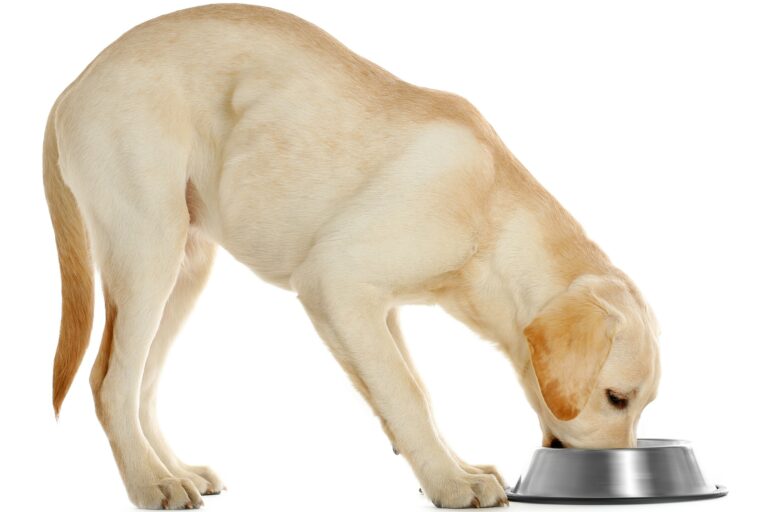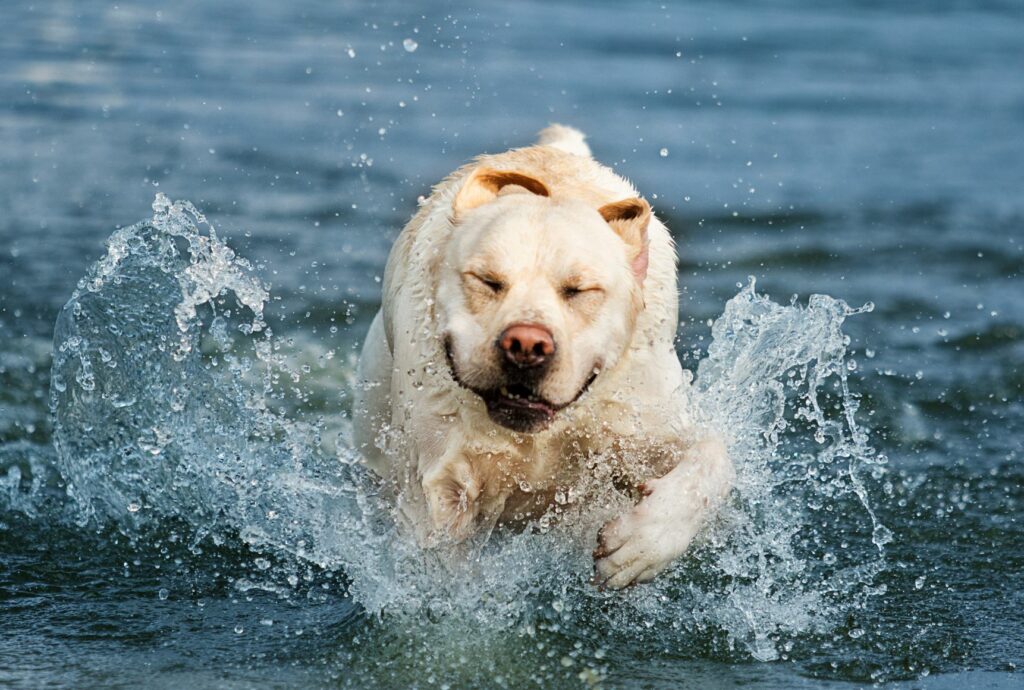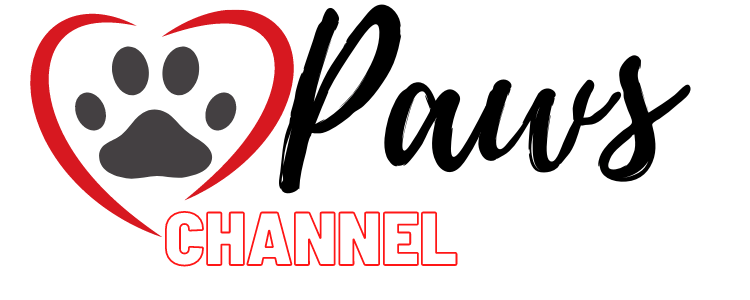The number of overweight dogs in our households is constantly increasing. However, to maintain good health and longevity it is important for the overweight dog to get rid of the extra pounds. Have you discovered that your dog is very fat? Then get rid of the extra pounds with a few meters and fixed rules of feeding.
Is my dog overweight?
Dog breeds sometimes differ significantly in physique and size. However, with a few simple steps you can find out if your dog is very fat.
To do this, simply place your hands loosely on the dog’s sides. If you can no longer feel them without much pressure and if looking from above you can no longer see the waist, then now is the time for a diet.
Why is this so important? Overweight dogs suffer from certain diseases more often than normal weight dogs. Even the life expectancy of overweight dogs decreases and on average they die two years earlier than lean dogs.
Overweight dog: support from the vet
If you suspect that your dog is very obese, you should definitely visit your veterinarian. Your veterinarian can better determine if and to what extent your dog is very obese and rule out possible health causes. He will then suggest a healthy method to help your dog lose weight gently.
The next step is to set the desired weight and adjust the daily portion accordingly. The recommended amount of food is based on the ideal weight of the animal. The daily portion at the beginning of the diet should be adjusted during the next tests according to the individual progress and weight loss. The goal should be for the dog to lose one to two percent of his or her body weight per week.
What should I look out for when changing my diet?
To achieve a significant reduction in energy intake and thus the desired weight loss, it is often necessary to feed only half of the calories you have given so far.
However, a diet with the food so far is not recommended, giving only half the amount of food than before. Because the food is designed to provide the dog with all the necessary vitamins, minerals and trace elements depending on its weight. If a very fat dog receives only half of his food, in the long run he will develop symptoms of insufficiency.
Another negative consequence of a half-diet is a lack of satiety, as the dog’s stomach is never completely full. The dog begs more and more often, and even begins to steal food. Some dogs even show a protesting behavior, for example the dog begins to defecate in the house.
Instead, you should change the diet of an overweight dog with a special weight loss diet. But do not forget one thing: the excess weight that has accumulated for a long time does not subside within a few weeks. The diet lasts for months. Even after that, you should continue to follow most dietary rules so that your dog does not gain weight again.
Food for weight loss: what should I look out for when buying?
A good dog food comes from a reputable manufacturer that produces feed with strict quality controls, and declares the nutritional values and ingredients of the food in a completely transparent way for the consumer.
Is your dog slightly overweight? Or is it already too thick? In the latter case it is worth resorting to a special, dietary food prescribed by your veterinarian.

Light foods or diet foods
Light foods are usually characterized by the foods of a range of a manufacturer that have the least amount of calories. They are suitable for weight control, but mainly not enough for weight loss.
Special diet foods, which should be clearly stated as such, have a significantly lower calorie content. Nevertheless, these diets are well adapted to the needs of overweight dogs and contain all the important nutrients, vitamins and minerals.
In addition to the dietary dry food you use, liquid food from the same diet series also helps you achieve a better feeling of satiety. Thanks to the higher water content of liquid food, you can give larger portions and thus better fill the stomach of your favorite pet.
High content of crude protein
High protein content is especially important when composing a suitable food for overweight dogs. A crude protein content of 30 to 40 percent in dry feed and 9 to 12 percent in liquid feed has been shown to be good. In this way, the food becomes tasty for the dog, while at the same time it contributes to the deliberate loss of fat and increases the feeling of satiety.
Low content of raw fats
Fat, on the other hand, is the largest source of calories. Per unit weight contains 2.5 times more energy such as protein and carbohydrates. For this reason, it should only be contained in small quantities.
However, the food should not be too low in fat, so that the necessary fatty acids and fat-soluble vitamins are obtained. Ideal for dry foods, eight to ten percent is suitable, while for liquid foods, four percent content of raw fats.
Increased content of raw fibers
In addition, a higher percentage of crude fiber of ten to fifteen percent in dry food and two to three percent in liquid food is useful. Raw fiber – that is, edible fiber – increases the volume of food and provides a faster feeling of satiety. In addition, some of the fibers support intestinal health and stabilize the healthy intestinal flora.
Where are the additives used?
Additives such as the amino acid L-carnitine can also have a positive effect on weight maintenance. Because L-carnitine stimulates fat burning in the body. The anti-inflammatory omega-3 fatty acids in the diet also make sure that blood sugar levels remain stable.
Amount of food: how do I properly feed an overweight dog?
The main reason that dogs gain weight is due to the excessive amount of food. This often goes hand in hand with many rewards and treats. It is therefore necessary to adhere to the recommended amounts of food for weight loss (weight loss).
If you measure dry food with just one measuring cup, the amount of food is usually very high – often up to twenty percent. Because especially in small dogs, ten more grains of dry food can lead not only to weight loss but also to weight gain. That’s why you should weigh the food with the help of a kitchen scale.
Also limit the number of daily treats and chewing products for your dog, as they significantly increase calorie intake. Overall, reward treats should not be more than ten percent of your estimated daily calorie intake. In addition, they should be included in the recommended daily allowance.
Tip: To be able to give your pet as many treats as before, just make very small bites out of them. The dog does not care about size!
Also make sure that your dog does not take more food from the table. Human foods are high in calories and often cover a large part of a dog’s daily needs. Sixty grams of cheese, for example, covers 23 percent of a 20-pound dog’s daily caloric needs.
Overweight dog: do not forget to exercise
For weight loss you should definitely stop feeding with the usual food and gradually get your dog accustomed to a special diet. The change in food alone can not, however, bring the desired results.
In addition, you must ensure that your four-legged friend moves adequately. An exercise program for the dog takes care of increased energy consumption. Excess fat deposits are broken down and new muscles are created.
It is important to adjust the training to the dog’s level of fitness. For a start, exercise in the water or on soft ground has proven to be beneficial in order not to strain the joints. Slowly increase the duration of the activities.
Tip for reading: Are you looking for alternatives to the classic walks? In zooplus magazine we present you manyactivities you can try with your dog.

© Happy monkey / stock.adobe.com
The movement in the water does not strain the joints, develops the muscles and cools down in the summer.
Aids for easier weight loss
For feeding with liquid food are suitableanti-greasy bowls . These force the dogs to eat more slowly. As a result, the feeling of satiety appears earlier and lasts for a longer period of time. At the same time, dogs are busy for longer and therefore more satisfied in the long run.
You can also increase your dog’s satisfaction with a snack ball or otherintelligence games . You can fill all this with a part of the weighed daily portion of dry food and thus keep your dog busy. This way, the dog moves more and loses some of the calories it has consumed again.
You can resort to chopped vegetables such as carrots, cucumbers or apple pieces, so you do not have to completely cut the reward treats from your dog. Vegetables have the advantage that they contain almost no calories for the dog and yet they fill his stomach. At the same time, refusing this reward is a sign that your dog is definitely not hungry!
Finally, it is advisable to adjust the size of the bowl to the amount of food. The allowed portion looks more like a small saucer than a very large one.

